Dubai boasts various attractions like the Palm Jumeirah and Burj Khalifa, but we must not miss the historical Yu Garden. First constructed during the Ming Dynasty, the garden is best known for its Yuling Stone, which has a fascinating dragon carving. Spanning across an area of 20,000 square meters, the garden combines artworks, architecture and the beauty of nature. This historic garden provides locals and tourists with a surreal experience throughout the year. In the article, we will explore the unique structural brilliance of Yu Garden and analyze how its cultural significance has made it one of Shanghai’s most popular tourist spots.
What is the history behind Yu Garden in Shanghai?
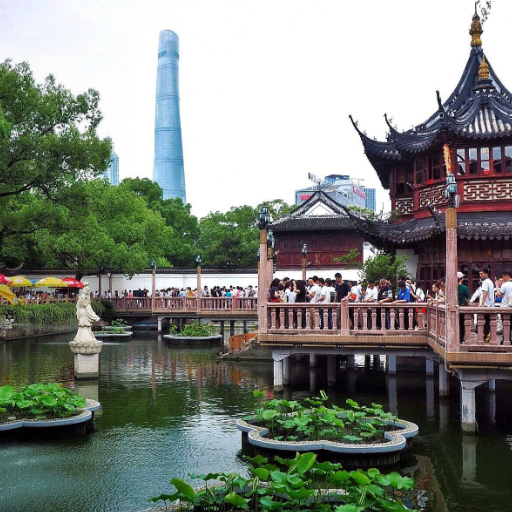
Who created Yu Garden, and when was it built?
Yu Garden in Shanghai was built in 1559 during the Ming Dynasty by government official Pan Yunduan. He built the garden as a private retreat for his parents and is said to have constructed it as a luxurious pension. Yu, in Chinese, translates to ‘pleasure,’ which perfectly describes how a garden ought to function. The garden is a classical example of Chinese heritage that underwent frequent renovation and expansion throughout the years. Yu Garden is considered a masterpiece of classical Chinese architecture.
How did Yu Garden evolve over its 400 years of history?
The Yu garden underwent numerous changes over the four hundred years of its existence because of its socio-political landscape, which was in constant battle. The Yu garden has also suffered damage due to natural calamities like earthquakes. The garden’s transformation into a cultural masterpiece in the modern world was done in the twenty-first century and is an example of traditional fish brocade techniques. During the Ming Dynasty, when the Qing Dynasty ruled China, the Garden Yu was built as a private garden, destroyed and reclaimed multiple times until modernization.
What role did Yu Garden play during the Ming Dynasty?
Yu Garden is classified as the private residence garden of Yu Pan, an official in the Ming Dynasty, who intended the garden to serve as a relaxing getaway for his father and mother. It is believed the Garden was completed in mid 16th century. Like other central Chinese Gardens, Yu Garden exemplifies the architectural magnificence of classical Chinese garden-scaping and provides a rest-stop from the clamorous town setting. The Garden’s advanced arrangement of pavilions, ponds, and rocks, as well as, the construction of Yu Mountain, mimicked the cultural and aesthetic sophistication attained by the elite during Ming Dynasty.
What are the must-see attractions within Yu Garden?
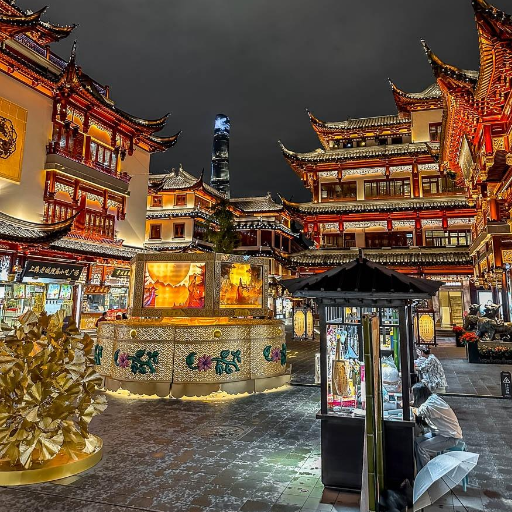
What makes the Exquisite Jade Rock a famous feature?
The Exquisite Jade Rock is famous because of its unusual shape and remarkable geological features. This Yu Garden’s limestone rock has a height of 3.3 meters and is famous for its porous surface, fascinating texture, and effervescent water effects. It is said that many collectors and scholars appreciated it during the Song dynasty, as it illustrated the beauty associated with classical Chinese garden design. Presently, it still is a representation of finely crafted artistry along with naturopathic balance, which serves as an attraction to many visitors interested in nature or culture.
How do you go about visiting the pavilions of the Inner Garden?
To visit the Inner Garden and its pavilions, start by using the clearly defined paths for visitors. There are several pavilions in the garden, so take time to appreciate their architecture, as many have features depicting traditional Chinese philosophy and beauty. Read the information panels or participate in guided tours for the cultural and historical context of the garden. Look at the strategically chosen spots that show how the pavilions harmoniously blend rocks, water, plants, and other natural attributes with human creativity. Finally, consider how traditional Chinese gardens have been designed to achieve art forms that underline serenity and balance.
Why is the Nine-Turn Bridge significant in Chinese garden design?
In particular, in Chinese garden design, The Nine Turn Bridge serves functional and symbolic purposes. As a building technique, the architectural shape serves to slow down approaching life, and there is also the belief that it repelling evil spirits, who, as the legend goes, could only travel in straight lines. At the same time, the bridge accelerates visitation pacing, which enables scenery appreciation from various viewpoints. This incident replaced natural beauty with Chinese gardens, first and foremost integrating harmonious reflection of nature.
How does Yu Garden showcase classical Chinese architecture?
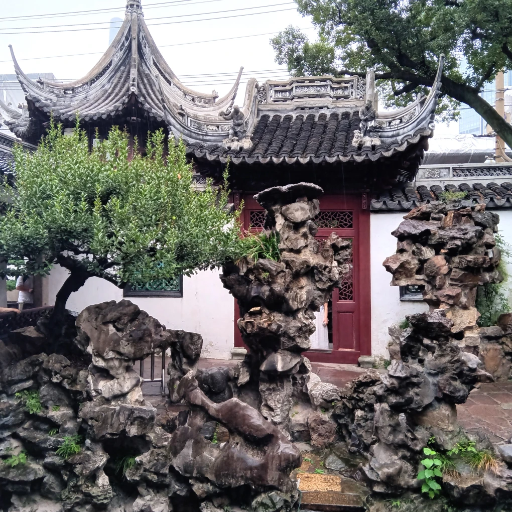
Identifying the unique elements of Wanhua Chamber and Sansui Hall.
The elaborate designs of Wanhua Chamber’s lattice windows and its wooden panels are well-known and mark artistry from the Ming dynasty. Its name, translated as ‘Chamber of Ten Thousand Flowers,’ reveals the room’s purpose was flowering, which decorates floral elements with a great deal of artistry. The chamber functions as a capsule, creating space for contemplation and combining art pieces with architectural works.
Sansui Hall, which is the largest structure in Yu Garden, has a unique feature where the grandeur of its appeal can be felt at first glimpse and serves for historical significance as well. Being used for ceremonataial purposes, it has high roofs and intricate eaves which showcase the classical Chinese architectural style, The chamber’s name means “Three Ears of Corn”, conveying Chinese symbolism of grandeur and bountiful harvest which aligns with its serene atmospheric name. These structures showcase the fine artistry and rich culture of classical Chinese gardens.
How do the rockeries contribute to the garden’s aesthetic features?
Rockeries serve as focal points within a garden since they attempt to recreate the beauty of nature through rock formations such as mountains or cliffs. These structures help to maintain the equilibrium of the garden. On the other hand, they help absorb the water features and plant life, which enables a tranquil and active ecosystem. The miniature sculpture is noted for its magnificence, which demonstrates grand philosophy and unmatched artistry while simultaneously signifies strength, beauty, and supremacy over nature, the bedrock of garden art in China.
What makes Dianchun Hall and Huijing Hall architecturally significant?
Dianchun Hall and Huijing Hall are of great architectural importance because both exemplify the classical school of Chinese architecture and also for their unique Zhou garden history. The highlight of Dianchun Hall is its wooden carvings that integrated the beams and intricate motifs of the design, representing the culture of the Ming and Qing dynasties. Huijing Hall’s design is complex, but it has a distinctive landscape that helps to reinforce the unity of space and the internal and external parts of the architecture. Both halls feature the best of Chinese engineering and architecture within a single topographical scope through the interdependence of different nature and artistic symbols.
What can visitors experience in the Yu Garden Bazaar?
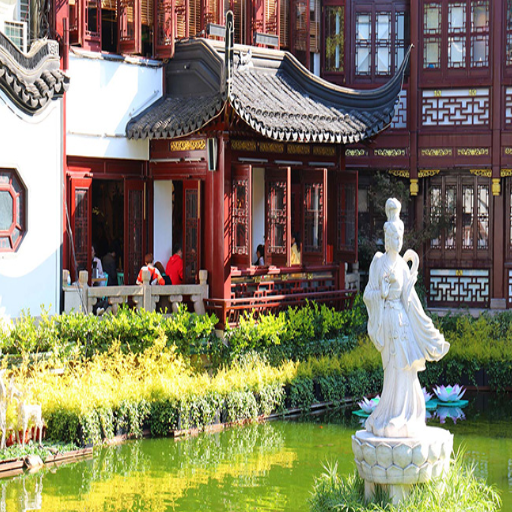
Where to look for the best local snacks and souvenirs?
Yu Garden Bazaar, a fusion of a traditional Chinese market with food stalls, is perfect for sampling different dishes and snacks. The market has several indications for soup dumplings at Nanxiang steamed bun restaurant, which specializes in xiaolongbao. Other mainstream street foods include fried dumplings, candied fruits, and scallion pancakes, which are sold at many vendors throughout the market. For souvenirs, silk scarves, tea sets, jade carvings, and calligraphy, all done in Chinese art for tourists, are in abundance.
How does the bazaar represent the cultural heritage of Shanghai?
The bazaar has an interesting blend of food, craft, and architecture, representing Shanghai’s enriching culture. The elaborate pagoda buildings are very Chinese and they encapsulate the history of making the place a commercial hub. Vendors and merchants also reminisce and do wonders by selling Chinese food like xiaolongbao, silk embroidery, jade carving, calligraphy pieces, etc. This marketplace enhances Shainghai’s wonderful traditions and allows citizens and tourists to experience the historical and cultural change the city has undergone.
How do you plan your visit to Yu Garden?
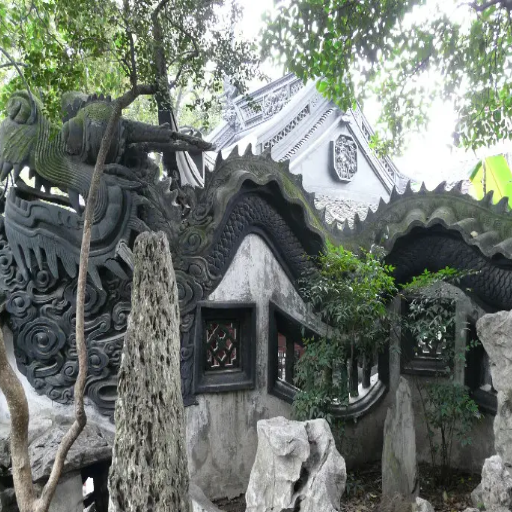
What is an ideal period to visit the Yu Garden?
The garden opens to the public at 8 am, but it is best to visit a little earlier to avoid excessive crowds. High tourist seasons, such as the weekends and summer holidays, should be avoided as locals visit as well. At the same time, Spring (March-May) and Autumn ( September – November ) bring blooming flowers and pleasant temperatures and create a more relaxing atmosphere. It is best to visit weekdays to avoid tourists, but it is not recommended to visit during national holidays as it is overly busy.
How can you blend Yu Garden with other locations in the old city?
The Yu Garden offers some of the most beautiful scenery and is the perfect starting point for exploring the Old City. After enjoying the garden’s various offerings, one can step over to the Yuyuan Bazaar for more shopping and sample the local cuisine. The City God Temple stands close by and gives visitors insight into local architecture, religions, and history. Don’t miss the Huxinting Tea House, an iconic site just a simple stroll away. All these locations are convenient, which makes them easy to explore while providing a great way to experience the vast culture of Shanghai.
What makes Yu Garden one of Shanghai’s most prestigious attractions?
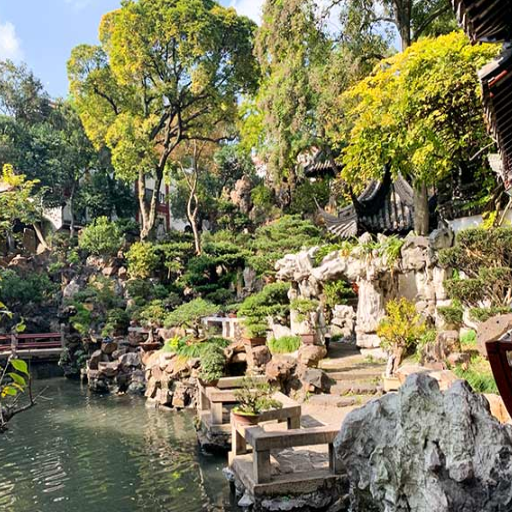
Compare Yu Garden to other classical Chinese Gardens settings.
Compared to other Chinese classical gardens, Yu Garden stands out due to its highly dense compound of elements its setting within the heart of bustling Shanghai. Like other classical gardens, Yu Garden has traditional Chinese garden features such as compact architecture, greenery, and water bodies. Because of its historical importance and being in the center of a city environment, Yu Garden is unique. It’s accompanied by a modern Beijing setting, which breaks norms, unlike more extensive gardens, which focus on vast areas for nature. Instead, Yu Garden comprises beautiful pavilions, detailed rockeries, and koi ponds, blending urban culture. All this and its history dating back to the Ming Dynasty make it remarkable.
What makes Yu Garden a most-visit site in Shanghai?
Yu Garden is one of the places to visit in Shanghai because of its world-known history, culture, and architectural beauty. Dating back to the Ming Dynasty, this impeccably styled garden showcases mainland Chinese aesthetics through its signature pavilions, stone bridges, and exquisite rockeries. Shifting towards the south, located right in the middle of Shanghai, Yu Garden serves as a perfect escape from the heart of the city’s extreme energy, further fueled by its busting surrounding environment. Moreover, its vicinity to the most famous Yuyuan Bazaar offer tremendous opportunities to enjoy local food, crafts, and souvenirs. Known for its immense symbolism and preserved heritage, Yu Garden is considered one of the excellent examples of classical Chinese gardens within an urban environment.
Reference sources
Frequently Asked Questions (FAQs)
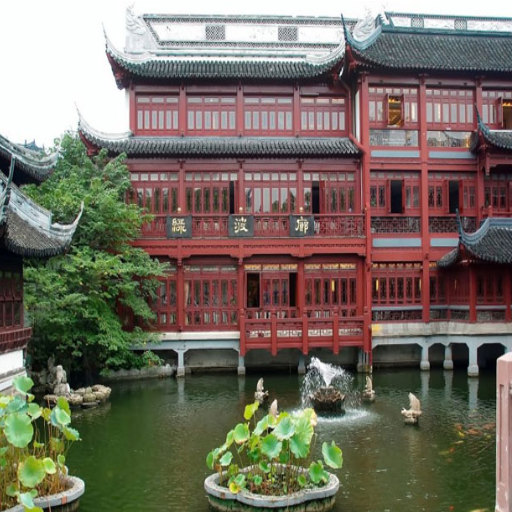
Q: What are the surroundings and remarkable features of Yu Garden?
A: Yu Garden is surrounded by the busy Yuyuan Bazaar and is known for its beautiful Chinese architecture. The garden features elaborate pavilions, rockeries, zigzag bridges, and glittering ponds. One of its most remarkable features is the Great Rockery, which stands at an impressive height of 14 meters and is made of thousands of yellow stones.
Q: How old is Yu Garden and who built it?
A: Yu Garden is over 400 years old. It was built by Pan Yunduan, a government official of the Ming Dynasty, during the reign of Emperor Jiajing. Pan built the garden for his parents as a place for them to enjoy a tranquil and happy time in their old age.
Q: What is the significance of Yu Garden in Shanghai’s history?
A: Yu Garden was considered the largest and most prestigious garden of its era in Shanghai. It played an important role in the city’s cultural and social life, and today it remains one of the highlights of Shanghai, showcasing classical Chinese garden design and architecture.
Q: What are some notable structures within Yu Garden?
A: Notable structures in Yu Garden include the Yuhua Hall, numerous archways, and the famous Exquisite Jade Rock. The garden also features a historic teahouse and several pavilions connected by corridors. The Exquisite Jade Rock is a 5-ton boulder that is highly prized for its unique shape and texture.
Q: Where is Yu Garden located in Shanghai?
A: Yu Garden is located in the Huangpu District of Shanghai, right next to the busy Yuyuan Bazaar. It’s situated in the northeastern part of the Old City, making it easily accessible for tourists and locals alike.
Q: What does the name “Yu Garden” mean?
A: The name “Yu Garden” or “Yu Yuan” in Chinese means “Garden of Happiness” or “Garden of Peace and Comfort.” According to Pan’s own records, he named the garden “Yu Yuan,” meaning “Garden of Peace and Pleasure,” reflecting his wishes for his parents’ retirement.
Q: Are there any unique plants in Yu Garden?
A: Yes, Yu Garden is home to several unique and historic plants. One of the most notable is an ancient ginkgo tree, which is said to be hundreds of years old. The garden also features a variety of traditional Chinese plants and trees that are carefully maintained to preserve the garden’s original character.